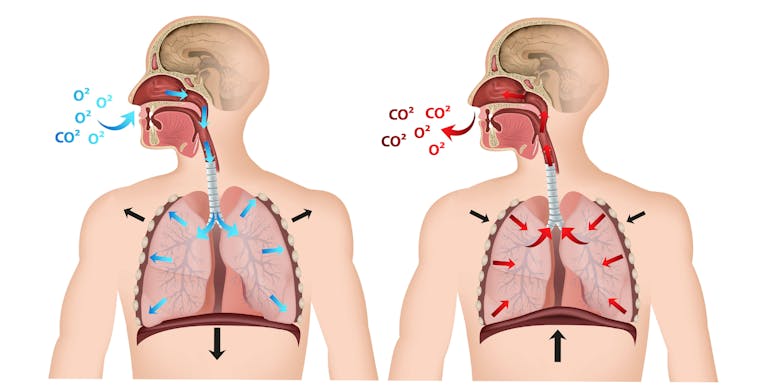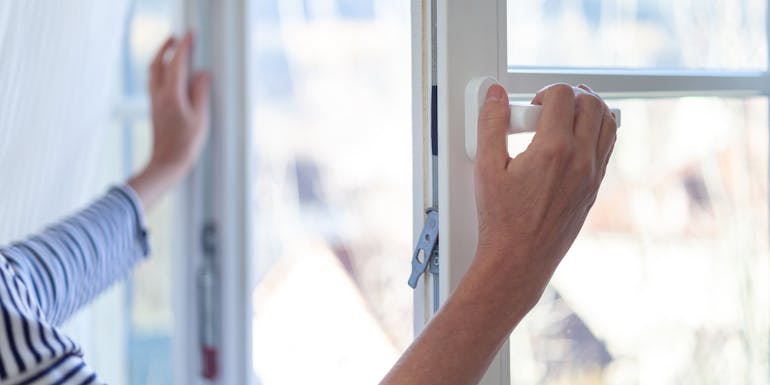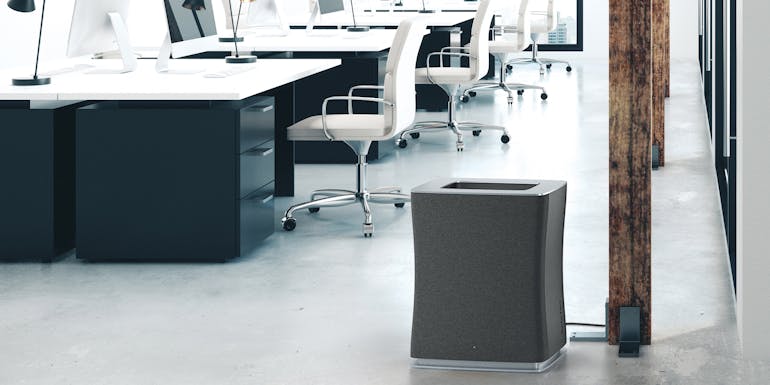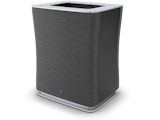
Usha Müller, 29 January 2024
Office/home office
Ventilation in the classroom can improve performance
The indoor climate influences not only our daily well-being but also our performance and health. Good air quality is of major importance in schools in particular in order to ensure that pupils’ performance does not suffer. A study carried out by the Federal Office of Public Health (BAG) found that the majority of pupils have to spend their school days in rooms where the air quality is poor which has been proven to have a negative effect on their performance. Read on to find out which factors lead to poor air quality, what effect air quality has on our performance – and on pupils’ performance in particular – and how performance in the classroom can be boosted based on improved air quality.
Read on to find out about:
- Which factors lead to poor air quality?
- Performance affected by poor air quality
- Effects of poor air on pupils’ performance
- Boosting performance by improving air quality
- Excursus: Air purifiers in Adliswil classrooms
Which factors lead to poor air quality?
There are many different causes of poor air quality. Room temperature is something that every person notices: if it is too cold or too hot, we soon start to feel unwell. Although the feeling of warmth and cold is extremely individual, a temperature of around 20° Celsius is regarded as healthy.
Another determining factor for air quality is the carbon dioxide (CO2) emitted into the air when we exhale. The more people there are in a room, the more oxygen is required and the more carbon dioxide is emitted into the air. The oxygen content in the air decreases constantly and the CO2 content increases continuously.
Poor air quality also arises due to pollution in the air: minute particles such as pollen, dust, VOCs, bacteria, viruses or fine dust swirl around in the air and pollute it. The more people move around in a room, the more particles of clothing, hair and skin that have already settled on surfaces will be stirred up and enter the air again.
If the level of humidity is too high – above 60% – or too low – below 40% – this can also lead to poor air quality. If the level of humidity is too high, it can lead to the formation of mould which can have a negative impact on both our health and furnishings. If the level of humidity is too low, it can also lead to poor air quality as our mucous membranes need moisture to stop us falling ill.
There are easy ways to achieve good air quality. With regular ventilation, the CO2 content in the air decreases. If a room faces onto a street or if the air is heavily contaminated with particles, an air purifier can help create cleaner air. A humidifier or a dehumidifier can be an effective device for keeping the humidity at a healthy level. Especially in the winter, a humidifier is often needed to enrich the indoor air with sufficient moisture after ventilation.
Performance affected by poor air quality
A good, healthy indoor climate has a major impact on our well-being. In particular, our ability to concentrate and performance depend on good indoor air. Our brains need sufficient oxygen in order to be able to achieve their full potential. Fresh air contains around 21% oxygen and only 0.04% CO2. When we exhale, the air has an oxygen content of 17% and a carbon dioxide concentration of 4%. Each time we exhale, it increases the carbon in the air massively and the percentage of oxygen decreases. If insufficient ventilation is carried out, the air quality deteriorates every time we exhale and performance quickly drops accordingly. If we want to improve our performance, there is no getting away from the fact that we need to actively improve the quality of the air.
Poor air indoors has been proven to affect our health. When the percentage of carbon dioxide in the blood rises, our blood vessels expand to let them continue taking in as much oxygen as possible. This causes blood pressure to drop which can result in both listlessness and fatigue as well as headaches and nausea and inevitably has an effect on performance. Our mucous membranes are also affected by poor air quality. If they are deprived of moisture, this can manifest itself in the form of a dry mouth, difficulty swallowing or hoarseness. Besides our airways, our eyes can also be affected: dry, irritated eyes or even conjunctivitis can be caused by poor air quality. It can have a negative impact on our well-being, resulting in poor performance.
Poor air quality is a challenge in all indoor spaces. Good air quality is a must in rooms where the ability to perform outstandingly well is important. In classrooms in particular, ensuring healthy air quality is a priority: pupils should be provided with the best possible conditions to enable them to develop and learn in a healthy climate.
Effects of poor air on pupils’ performance
The air in classrooms is often stuffy and of poor quality. A room can be occupied by a lot of people at the same time – all breathing and producing carbon dioxide as a result – for several hours. They contaminate the air with particles of skin, clothing and hair. They sweat and give off other particles such as viruses or bacteria into the air. As a result, the air quality deteriorates continuously. However, in order to ensure that pupils’ performance does not suffer from these poor conditions, it is important to provide good quality air in classrooms.
Between 2013 and 2015, the Federal Office of Public Health (BAG) measured the air quality in 94 classrooms. The results were sobering (in German): in more than two thirds of the classrooms, the air quality was unsatisfactory. The situation could be improved with very little effort. Poor indoor air in classrooms not only smells bad, it also has a negative impact on pupils’ performance. In order to be able to learn new things with a clear head, it is therefore all the more important for the air in classrooms to be kept fresh and as clean as possible.
Various studies have shown that pupils in rooms where there is unsatisfactory air quality suffer from reduced performance and negative effects on their health. When the air is poor, pupils get tired quicker and suffer from difficulty concentrating more often which leads to a drop in performance. In addition, pupils’ performance is affected by the physical symptoms that the unhealthy indoor climate can cause such as dry eyes, a sore throat, shortness of breath or a cough. Rooms with unsatisfactory air quality make it difficult to think clearly, thus preventing pupils from achieving their full potential.
In addition, unsatisfactory air quality can lead to increased absence due to respiratory infections and other illnesses. It is the dry air in particular that has a detrimental impact on our airways and promotes infection via that route. If pupils’ absence due to illness could be reduced, it would have a direct influence on their marks. For the more lessons they are able to attend, the more opportunities they will have to learn which will result in an improvement in pupils’ performance.
And let’s not forget the teachers absent due to illness on account of unsatisfactory air quality in the classroom. In particular, the effects of humidity being too low can quickly become noticeable – a dry mouth, difficulty swallowing or hoarseness can make it difficult or even impossible to teach. Lessons have to be cancelled which will also be detrimental to pupils in the long run.
Unsatisfactory air quality in the classroom has a negative impact on well-being in general. If pupils don’t feel well due to the poor air quality in the classroom, they will be unable to concentrate on their lessons and their marks may suffer as a result of them not being able to take in what they are being taught. Clean air is important for doing well at school.
Boosting performance by improving air quality
There are a number of measures that can help improve the air in the classroom and thus pupils’ performance. Ventilating the classroom regularly is a central factor. It is important to make sure that the windows are opened completely and not just cracked open so that as much air as possible is able to flow through the room. So-called intense ventilation enables the fresh air to circulate throughout the room rather than partially filling it with fresh air.
Regular ventilation is very important in winter in particular as that is when pupils spend most of their day in enclosed spaces. When ventilation is carried out in cold temperatures, it brings cool air into the room and the level of humidity drops. That is why a humidifier should also be used to keep the humidity at a healthy level. If the room feels too cold after ventilation, a heater can be used to bring the temperature back up to a pleasant level. Whereas in summer, it makes sense to use a fan if ventilation causes the temperature to go up in the classroom.
For ventilation to work properly in the classroom, a ventilation plan should be drawn up in order to ensure that it is carried out regularly and correctly – ideally at break times after every lesson in the form of intense ventilation. And to avoid unpleasant cold or draughts, ventilation should only be carried out at break times.
Ventilation in the classroom can also bring disadvantages. If the classroom is on a busy street with lots of traffic, it can allow ozone, fine dust or pollen to enter the room. If that is the case, then it is still recommended to carry out ventilation in order to reduce the carbon dioxide content since ventilation is the only way to reduce the concentration of CO2. After the windows have been closed, an air purifier should be used to remove contaminants such as particles, pollen and viruses from the air.
So healthy air quality can be achieved not only by carrying out ventilation properly but also through the complementary use of air treatment devices such as air purifiers and humidifiers. In addition, it is necessary to continuously monitor the air in order to maintain a healthy indoor climate. There are various devices that can be used to do that. A hygrometer can be used to measure both the temperature and the level of humidity. In addition, an air quality measuring device can help measure the CO2 content in the air. At the latest, immediate action can be taken when the carbon concentration in the air reaches an unhealthily high value.










